California Growers Seek the Next Home Brew: Coffee
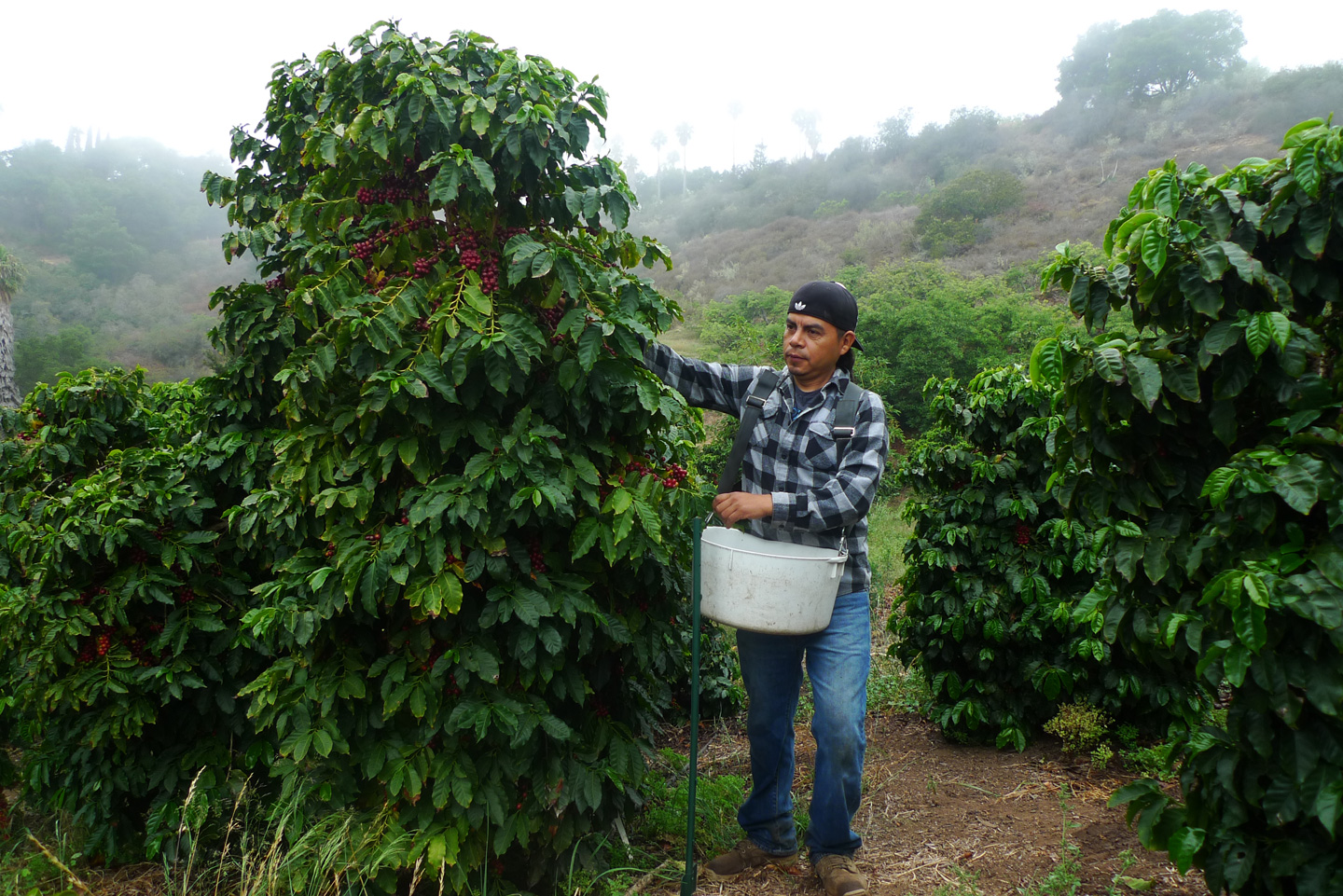
The most commonly traded commodity in the world is oil. What comes in second? Coffee. It’s been grown and loved since at least the 13th century in places such as Indonesia, Ethiopia and Central and South America. As a serious fungus threatens the crop worldwide, scientists are mapping the coffee genome to learn more about this plant. Though it’s not coffee’s natural growing environment, California is actually playing a role in the future of this most beloved and lucrative crop.
Sammy Venegas stands on a hillside shrouded in fog, thick with avocado trees, passion fruit and coffee plants. With a white bucket slung around his neck like a baby carrier, he picks only the reddest coffee beans.
“The redder the bean, the better the flavor,” Venegas explains in Spanish. “It’s perfect to drink.”
Venegas’ whole family plants and harvests coffee in Oaxaca, but he’s not in Mexico right now. He’s picking coffee 2 miles from the ocean, in Goleta, California, outside Santa Barbara.
“I call my family and tell them I’m working at a coffee ranch in California and they are like, ‘Seriously?’ ” Venegas says, with a laugh. “I say, yes, we have coffee in California. It’s incredible.”
The climate in Santa Barbara is dry, but with its proximity to the ocean, its microclimates can be surprising.
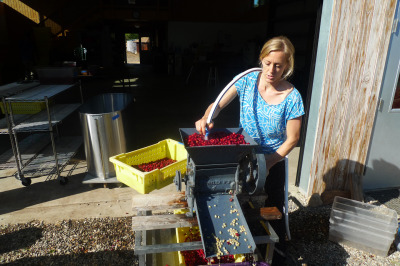
“On a morning like today where it’s all foggy and socked in, you can open your eyes and feel like you’re in many parts of the world besides California,” says Jay Ruskey. He’s the first farmer to make a real commercial go at growing coffee in the continental United States. He partnered with UC Cooperative Extension’s Mark Gaskell, who’s visiting the farm today for a special occasion. Finally, after five years, Ruskey’s small crew is harvesting several coffee varieties never before grown here.
Ruskey’s operation, called Good Land Organics, takes us from the fields to the processing shed. He puts beans through a de-pulper to separate out the skin, then into a fermentation tub. The now-skinless coffee seeds sit for a day or two, while the meat separates from the bean. After they dry, Ruskey weighs 100 beans of each variety to compare their yield.
“We’re doing more than just trying to find best yields,” Ruskey says. “We’re also trying to find the best cups of coffee.”
Let’s be clear: Santa Barbara is a far cry from the tropics, where the world’s most respected coffee is grown. But Jay Ruskey is an experimental farmer, like a long line of Californians. Since the late 1800s, agricultural explorers have roamed the world looking for crops to grow in the U.S. — avocados came from Mexico and Guatemala, dates from Morocco, and navel oranges from Brazil.
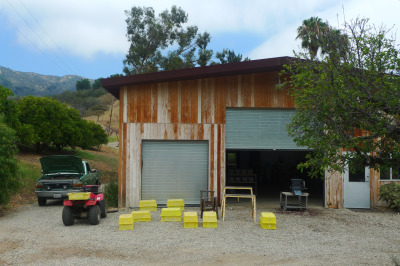
Ruskey’s not the only one doing coffee research in California. Juan Medrano, a professor of animal genetics in the School of Animal Science at UC Davis, has focused on milk genetics.
“But lately, I have developed another interest, which is also looking at the genetics of coffee,” Medrano says. “If you think about it, milk and coffee are traditional companions and they make a really good latte.”
In Medrano’s lab, staff researcher Alma Esles studies the genetics of Panamanian beans that Medrano collected at different altitudes, creating a library of information. “It’s like a collection of all that RNA that belongs to that specific coffee seed,” Esles says. Temperatures and microclimates associated with changes in altitude significantly influence the flavor, aroma and “mouth-feel” of coffee.
Eventually, they’ll study the beans grown on Ruskey’s farm. “We’re interested in looking at diversity, and Jay has quite a collection of different varieties,” Medrano says.
Medrano is part of a new coffee center at UC Davis. It’s bringing together people who study food science, genetics, marketing and the social aspects of coffee. Medrano says coffee research is pretty new.
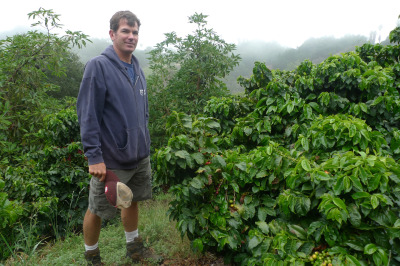
“I think it is important to study coffee. There’s several reasons,” Medrano explains. “Hundreds of millions of peoples’ livelihoods depend on coffee.” Additionally, the coffee crop is confronting some serious challenges. “The three main challenges are climate change, disease and quality,” Medrano explains.
He says California’s coffee crop is so new and small it wouldn’t really impact the worldwide coffee trade, but by growing it here we can learn about disease resistance, and farmers like Ruskey can determine if great coffee can grow outside its natural environment.
“I believe Jay’s producing very decent coffee for the conditions he’s in, so that’s admirable,” says Medrano.
Ohannes Karaoghlanian and Joanne Robles Swanson both grow avocados in Temecula. They take the bumpy ride to visit Ruskey’s farm, where coffee is growing next to and under avocado plants.
Coffee and avocados grow together in parts of Central America, and this pairing might make sense here, especially given our scant water supply.
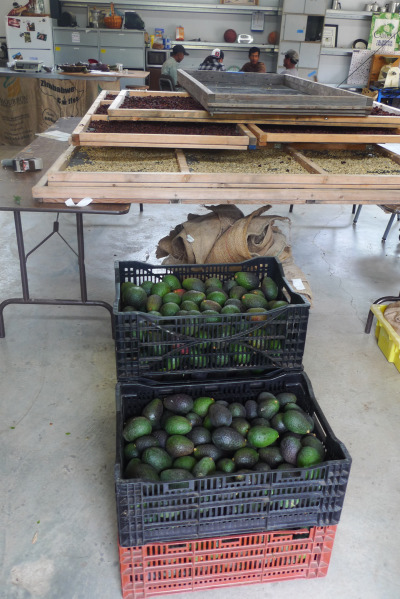
“That’s what we’re here to investigate!” laughs Karaoghlanian.
“If they could coexist, use the same fertilizer, use the same amount of water — maybe just a little bit more — then it makes sense to put these crops together,” says Swanson.
Right now, Ruskey’s getting the best price for his beans in Europe and Japan. He’s selling coffee plant starts from his greenhouse to other California farmers, and will process their beans after harvest.
“I look forward to the day when I can cup a California coffee from Santa Barbara against a California coffee in Temecula. We’ll have a little contest, meet together, invite our friends,” Ruskey says with a grin.
This may happen soon: Ruskey is already working with farmers in Morro Bay and San Diego County.
